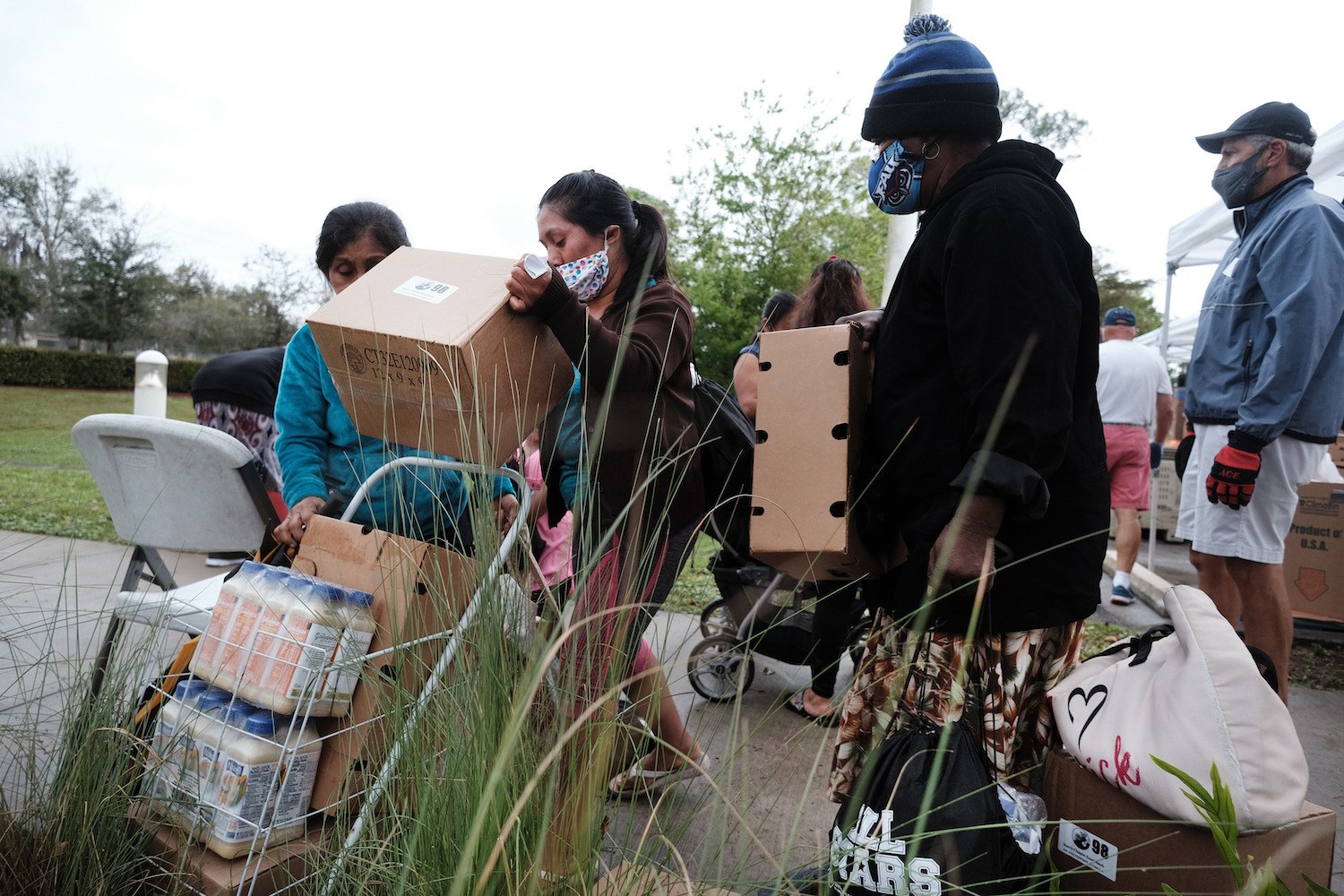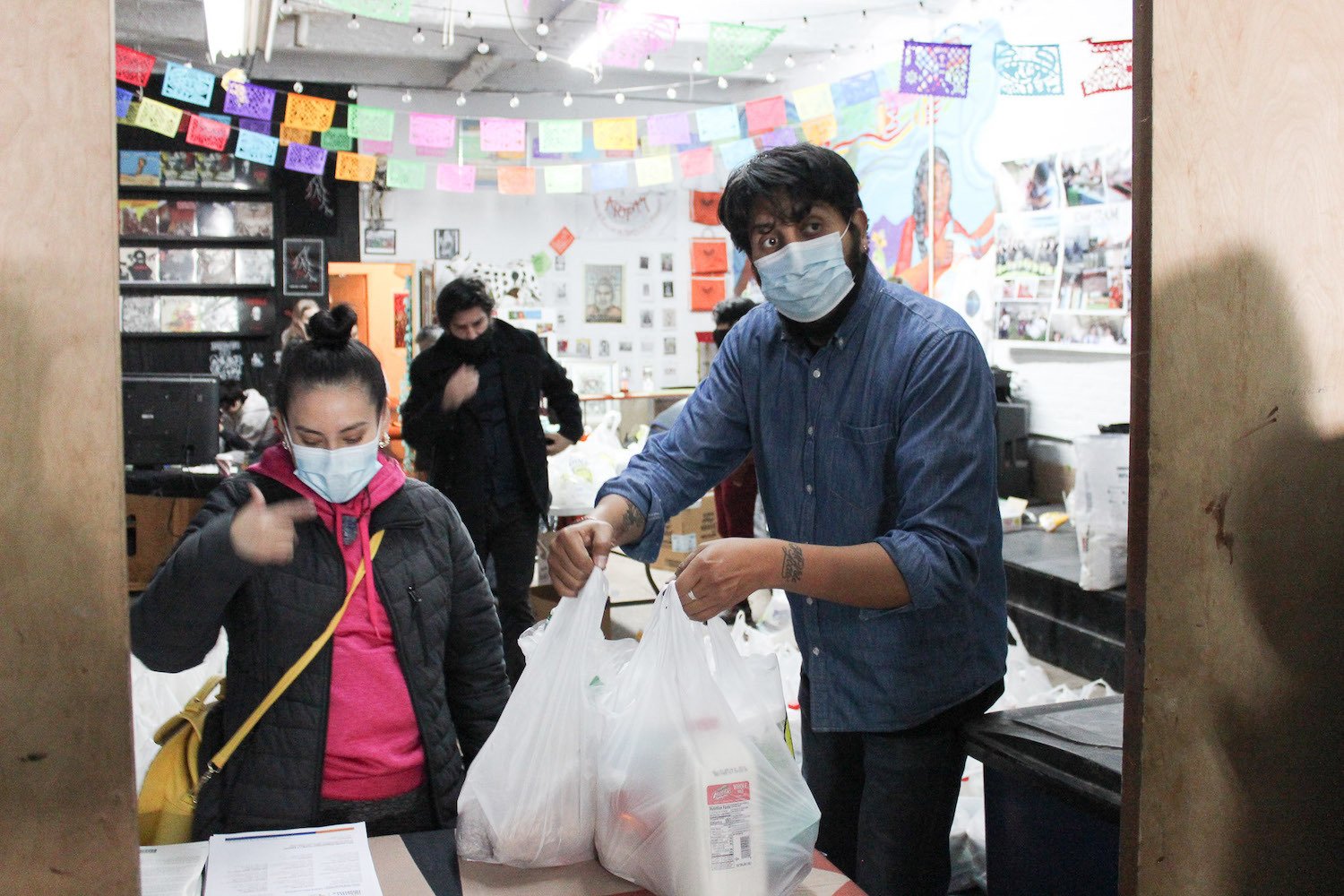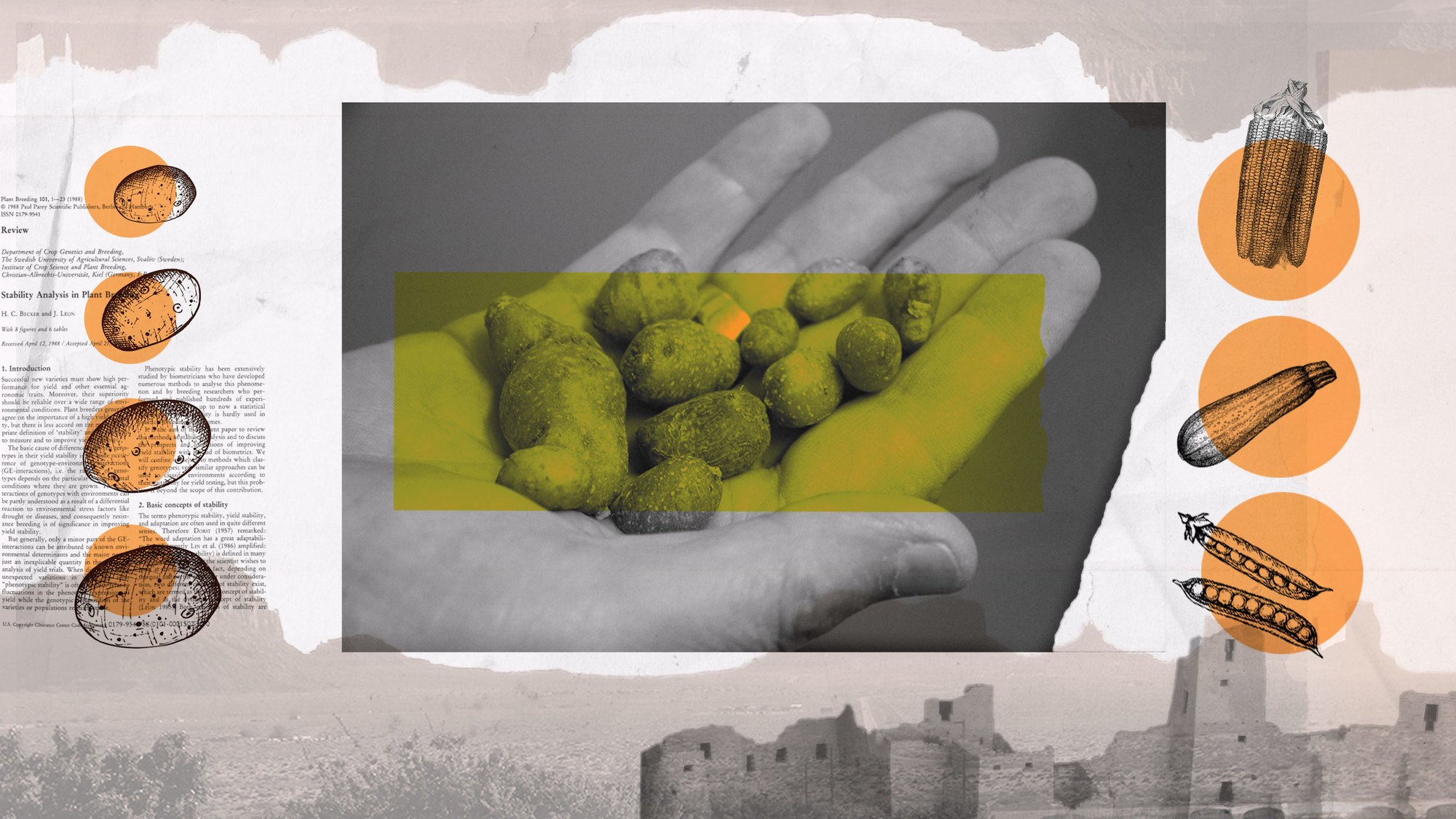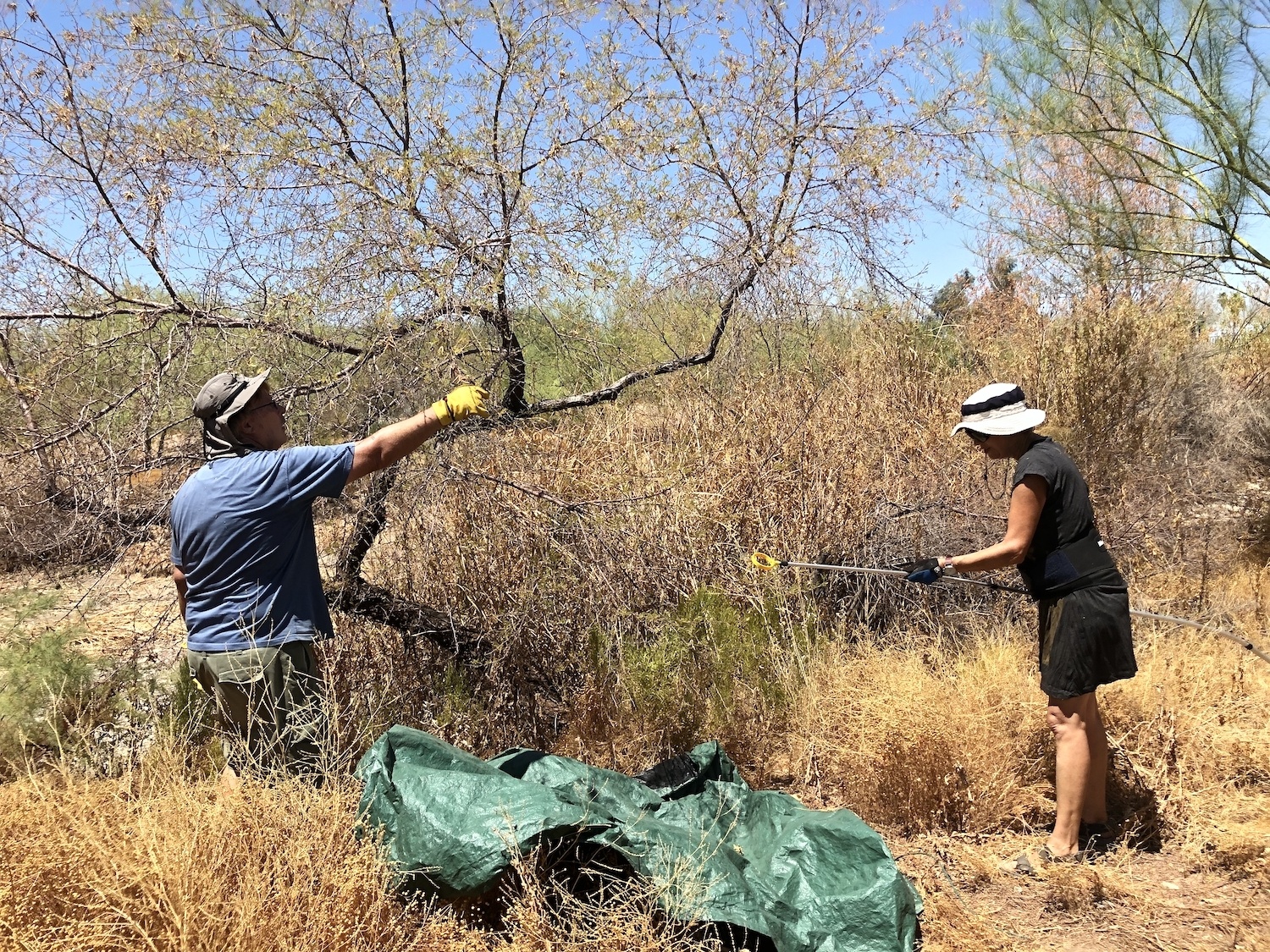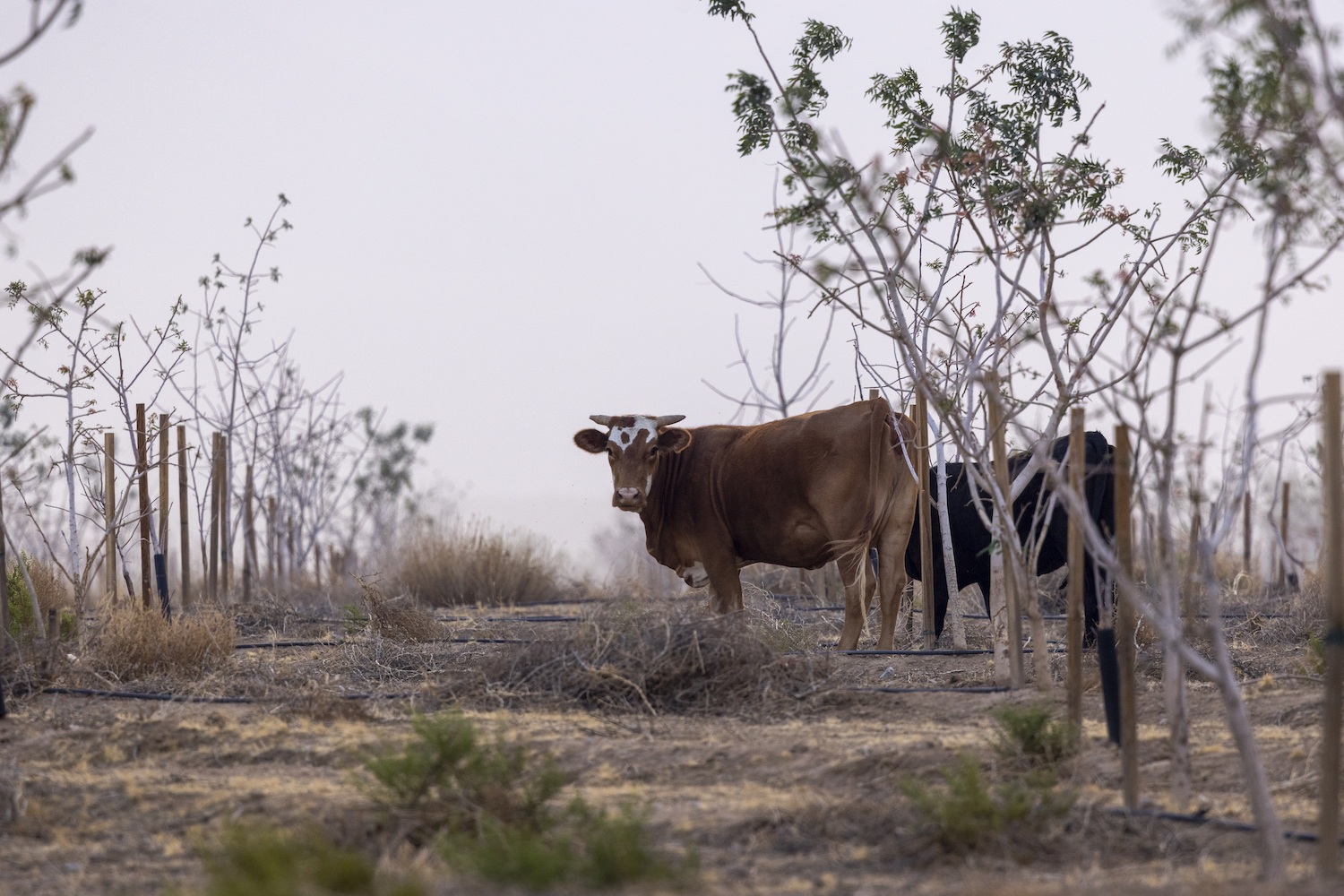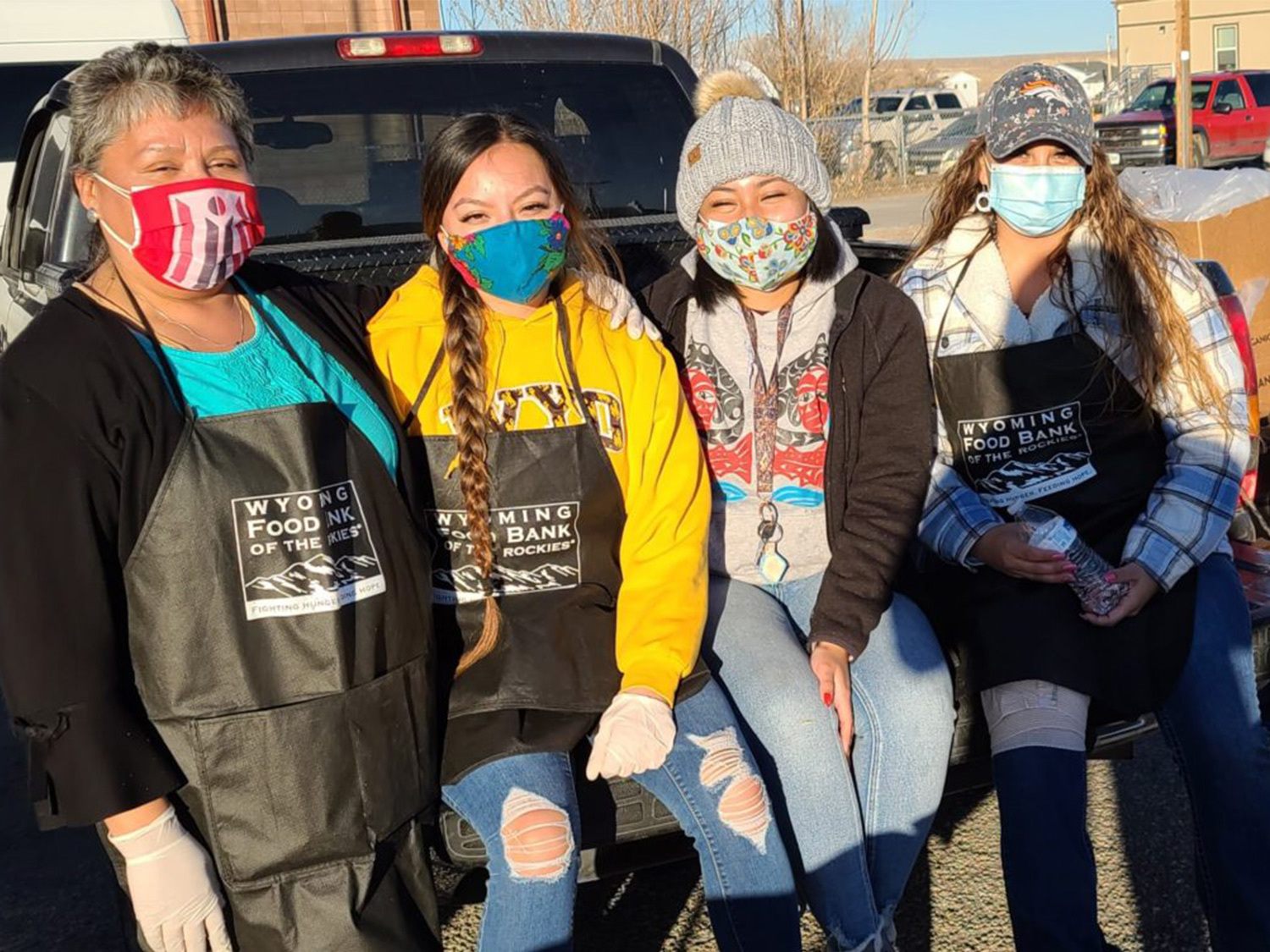
A report released last month found that 54% of Native American respondents could not afford to eat balanced meals sometimes or often during Covid. Food banks are trying to lower that number, working directly with tribes to help communities eat more healthy and locally sourced food from Indigenous producers.
This article is republished from Food Bank News, whose mission is to end hunger by advancing best practices in hunger relief. You can read the original article here.
Pictured Above: Te3oo Niibeisei (whose English name is Jacqueline White), left, with volunteers. Courtesy of The Food Bank of Wyoming.
By the time a new food program to serve Indigenous populations in Wisconsin wraps up at the end of this month, it will have distributed more than 10,000 food boxes to Tribal Elders throughout the state. For the hunger-relief organizations involved, it also will have provided a new perspective on how to run food distribution programs.
“Oftentimes, as food banks, we find ourselves trying to serve everyone in the biggest capacity we can,” said Stephanie Jung Dorfman, Executive Director of Feeding Wisconsin, which was awarded a Feeding America grant to run the program along with the Intertribal Agriculture Council and local Indigenous sovereign nations.
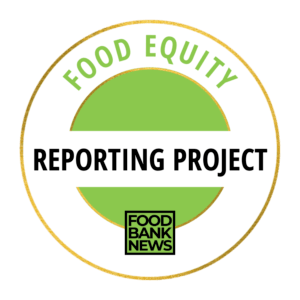
The final installment of our series of articles on food equity, aimed at promoting the value and practice of providing access to healthy food for all. Produced with support from Winter-Lehman Family Foundation.
“This program allowed us to step back and think about our role in ending hunger by getting the right food to the right folks,” Dorfman said.
Addressing hunger in Native American communities is a high priority, given the alarming rates of food insecurity on tribal lands. A report released this month found that 54% of Native American respondents could not afford to eat balanced meals sometimes or often during Covid, and more than a third ate less than they should because they did not have enough money for food.
In Wisconsin, the realization that traditional hunger relief efforts were not always striking the right chord in Native American communities came with initial distributions of the USDA’s Farmers to Families Food Box Program. While the boxes helped alleviate hunger in Native American communities hit hard by the pandemic, they were not designed with individual communities’ dietary needs in mind.
“There’s a lot of dairy in there, and a lot of our Tribal members are lactose-intolerant,” noted Daniel Cornelius, Technical Assistance Specialist at Intertribal Agriculture Council and a member of the Oneida Nation of Wisconsin, a program partner. “The effort was appreciated. But it got us thinking, ‘What could it look like to really run our own program?’”
While the boxes helped alleviate hunger in Native American communities hit hard by the pandemic, they were not designed with individual communities’ dietary needs in mind.
Led by insight from the Native nations, the team decided to focus its efforts on getting food to Tribal Elders. “We’ve lost many Elders here on the reservation,” said Gary Besaw, Director of the Menominee Tribal Department of Agriculture and Food Systems, and of the Menominee Tribal Food Distribution Department. Besaw is a member of the Menominee Indian Tribe of Wisconsin, another program partner. “It really magnifies that need for the appropriate foods that our Elders know.”
To get the right items into the Tribal Elder food boxes, the partner organizations asked Tribal food pantries to weigh in on which foods Elders would prefer. Using that insight, the team created boxes that featured frozen meats, produce, wild rice, and maple syrup.
Hoping to dismantle stigma around receiving food aid, the team offered the boxes to any Tribal member aged 55 or older, with no economic qualifiers attached. “With these food boxes, we flipped the stigma on its head and said, ‘These are our precious Elders, and we want to make sure they get the food,’” Besaw said. “We are honoring them and recognizing their importance by saying, ‘As long as you eat, you’re eligible.’”
“We asked Tribal members what kind of foods they needed and wanted, and what kind of foods they didn’t want,” said White. “It’s important to distribute food that’s culturally appropriate, because we don’t eat like other people.”
The team also made efforts to source food items from local and Indigenous producers, thereby supporting Indigenous agriculture and creating more market opportunity for small businesses. That focus on sourcing Indigenously produced foods ended up inspiring new partnerships. For instance, the team provided boxes to one tribe’s Elders after sourcing fish from that tribe.
“Part of the hope is that in the long run, we’re going to be encouraging more production,” said Cornelius. “And that really comes back to the idea of food sovereignty. It’s tough to make a living off of food production, and I think that’s even more pronounced for our Tribal growers. We’re trying to build those conditions to expand overall production and feed our communities in the process.”
The Food Bank of Wyoming also found that listening and humility were key to serving Native American communities. The food bank is working with two Native nations to serve residents of the 2.2 million-acre Wind River Indian Reservation, which shares geography with the state of Wyoming. “Not going in thinking you know the answers is a big part of this,” said Tony Woodell, Director of Food Bank of Wyoming.
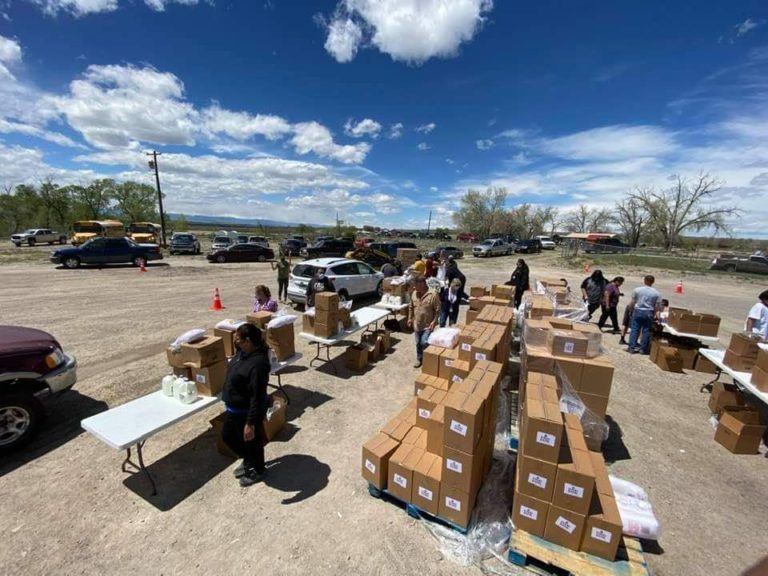
Native American tribes in Wyoming provided input on where to locate drive-up distribution points for food.
Courtesy of Food Bank of Wyoming
The food bank hired consultants who live on the reservations to survey other residents about their needs. Te3oo Niibeisei (Singing Crane Woman), whose English name is Jacqueline White, is a member of the Northern Arapaho Tribe and was originally hired as a consultant. Now she serves as a Tribal Relations Specialist for the food bank.
“We asked Tribal members what kind of foods they needed and wanted, and what kind of foods they didn’t want,” said White. “It’s important to distribute food that’s culturally appropriate, because we don’t eat like other people.”
The team found that there were preferences for meat, bluebird flour, and Indian corn. Grant funding from Feeding America helped to source some of those foods. Additional help came from donors like Wyoming bison ranch, Table Mountain Bison, which contributed 400 pounds of bison meat, with plans to donate another 800 pounds.
When the program launched, it provided services for about 500 households across the Northern Arapaho and Eastern Shoshone Tribes.
The team also worked with the tribes to determine the best contact-free distribution points for the food boxes. When the program launched, it provided services for about 500 households across the Northern Arapaho and Eastern Shoshone Tribes. In future, through a Boundless Collaborations Grant from Feeding America, the team plans to expand the program to Montana, North Dakota, and South Dakota.
The program has been successful by many measures. “It’s helped people to overcome the barriers of having to find transportation to go to neighboring towns where they may not be treated appropriately,” White said.
It has also helped the community to care for Tribal Elders, which is a vital element of Arapaho culture. “Arapaho people have so much love and respect for our Elders, and when we’re preparing meals, we make sure that they’re taken care of first,” White said. “I can’t even express what it means to us that the Elders are talking about what a great blessing it is that we’re bringing food here to the people.”

